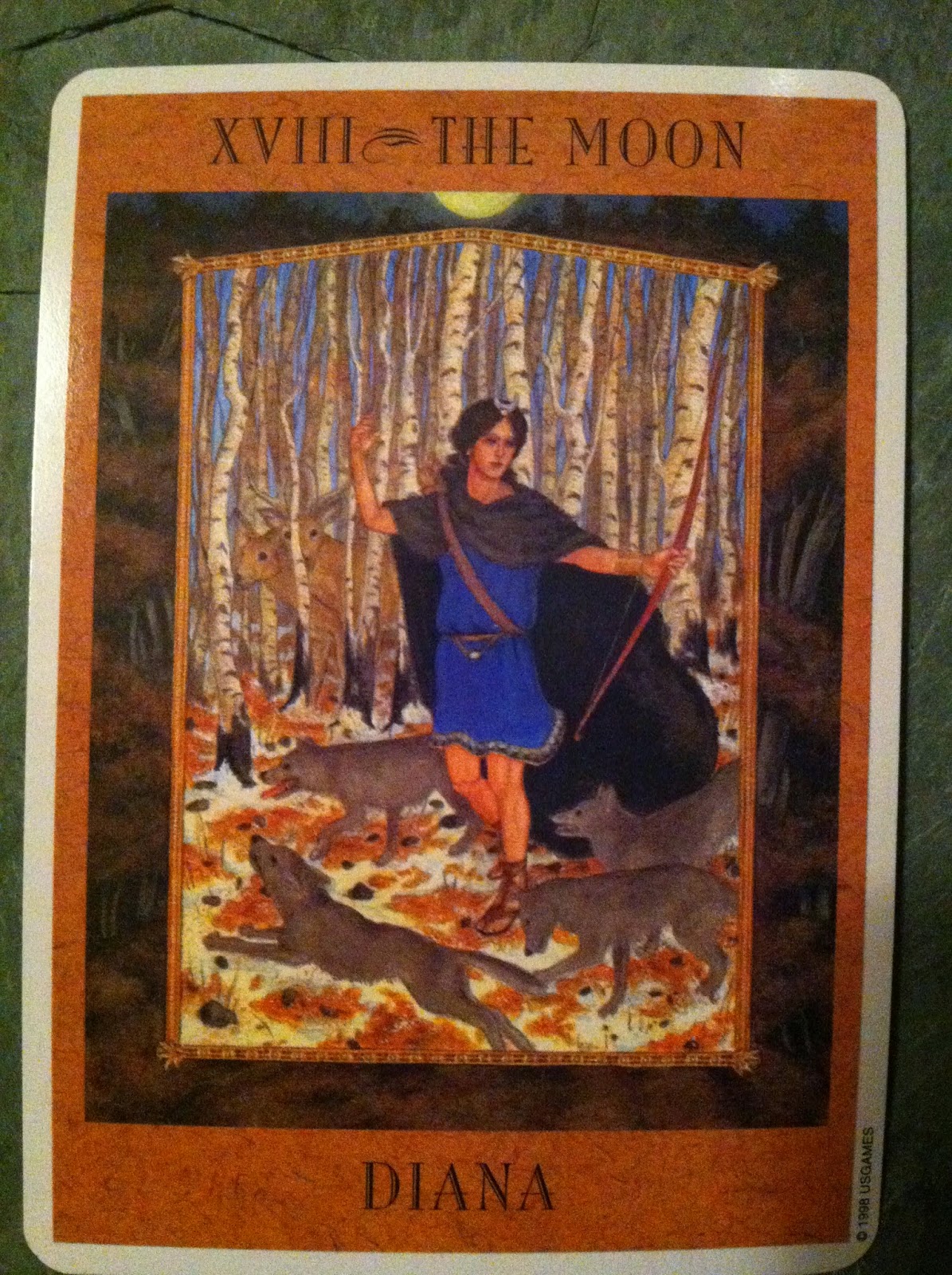While swords have the reputation of signifying misfortune (see the Barbara G. Walker card), they also are about intellect, wit (as in "razor"), and communication skills. Because they are associated with the element of Air, Swords are also about travel. Ace is the first card of a suit, a fledgling idea, a flickering light. The Ace of Swords may indicate something profoundly different from gloom and doom.
Kris Waldherr's Ace of Swords has a certain beauty, even though it is sinister at first glance, all stabbed into a barren wasteland, and all. Inscribed on the hilt is the Ankh, symbol of everlasting life, and above it is the symbol for Hathor, the cow-eyed Egyptian goddess of the restful arms. Is the handle of the sword always a fan, or does it fold back? Fans and feathers are symbols of Air, the element of freedom, intelligence, swiftness, travel, and lessons learned. The Sword as a symbol for medicine also comes into play here, because sharp things can kill but can also be used to excise infection and tumors. The goddess that Kris Waldherr uses for the suit of swords Isis, who brought her husband Osiris back to life from the dead. In Inuyasha, Sesshumaru (spoilers) brings the little girl Rin back to life with the power of his sword Tensaiga.
The Ace of Swords for the Celtic Deck looks like an offering on an altar. During school and other tasks involving brain power, such as writing a book or doing research, a person who genuinely, sincerely wants to reach her intellectual goal devotes her mind to the task. The laptop, the desks, the lab becomes an altar to the goal.
The Celtic Ace of Swords is also the Sword in the Stone of Arthurian legend. The gaining of wisdom and knowledge the Swords refer to can be arduous. If the knowledge gained is a "life lesson," the process of gaining the knowledge will probably be trying at best and absolutely terrible at worst. It takes a strong person to come out the other side with grace. King Arthur was the only person who was worthy enough to pull the sword out of the stone, and still had to plow through a ton of crap, with a lot of personal flaws. Life can suck. It takes an amazing person to push through the suckage and come out as good or better than they were.
Barbara G. Walker (of course) comes to the party with skulls and the swirling souls of the damned. Her Ace of Swords reminds us that all must die, even kings. We all have shitty days, even if we have a lot of money and power and are personally rather attractive. We're not alone. Everyone else is swirling around with us.
Back to happier thoughts. Robin Wood's Ace of Swords is full of glory and epiphany. The light of revelation shines through the clouds. The Sword itself is crowned with laurel. It is sharp and powerful--check out that gleam. It soars on golden wings, and it says that you can too. The questioner is intellectually powerful, and/or has a gift for communication. If travel is in the offing, it will be swift and smooth. The questioner is ambitious and motivated to accomplish his intellectual goals.
Key words: intellectual endeavors
conflict
travel
possible medical issues
Accolades for intelligence





























